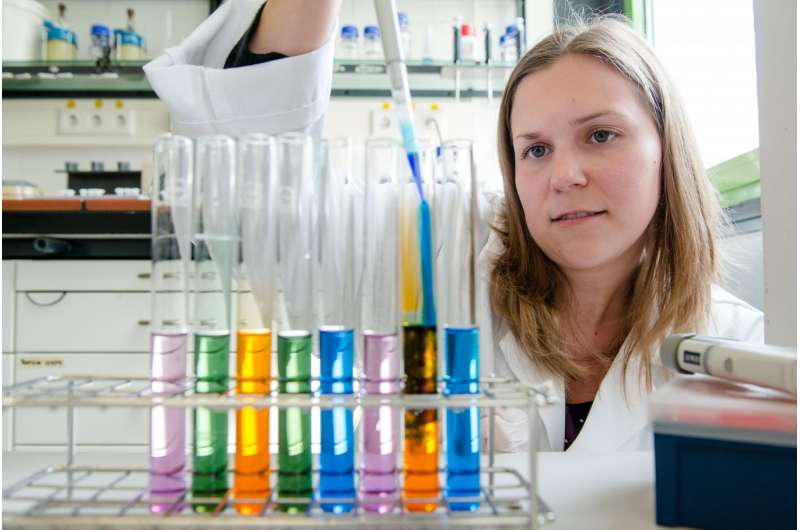How researchers teach bacteria new behaviours

Researchers working in the field of synthetic biology use components that occur in nature and combine them in a new way. This is how bacteria acquire functions that they hadn't previously possessed. This offers great potential for biotechnology.
Bacteria respond to temperature and metabolic products
Johanna Roßmanith and her doctoral supervisor Prof Dr Franz Narberhaus from the Chair of Microbial Biology carried out a successful study where they controlled the type of proteins a bacterium would manufacture and its behaviour. This is how they have made a bacterium swim that hadn't previously had the ability to move. The researchers made that possible by combining various modules from the bacterium's RNA in a new way.
In the study, which was published in the journal Nucleic Acids Research, the biologists utilised so-called riboswitches, also called RNA switches, and RNA thermometers. Riboswitches detect if there is a surplus of a certain metabolic product in the cell, and they regulate the biosynthesis or intake of that substance, if necessary.
RNA thermometers control a number of temperature-sensitive processes. For example, a bacterium that finds its ways from contaminated water into the human body notices the difference in temperature. As a result, it produces certain factors that lead to an infection of the host.
Mix and match of modules
"Regulatory RNA modules are attractive for applications in synthetic biology, because they detect signals from the environment directly and instantly switch the subsequent genes on or off," explains Johanna Roßmanith.
An open question was if such components that occur in nature can be combined arbitrarily like Lego bricks in order to develop novel sensors. For her thesis, the PhD student utilised various riboswitches that she coupled in series to a RNA thermometer.
Following an alternative strategy, she integrated the thermometer structure in the riboswitch. Both methods resulted in the creation of novel functional elements that respond to a combination of one chemical and one physical signal, in this instance temperature.
Teaching bacteria how to swim
In order to make the above-mentioned bacteria swim, the researchers placed a gene responsible for bacterial locomotion under the control of the newly combined RNA regulators. The correct signal combination was crucial for the experiment to succeed. The riboswitch required, for example, a certain chemical substance in combination with a certain temperature.
Potential in biotechnology
"RNA switches are not quite as modular as bricks in a model kit," admits Franz Narberhaus. "Ms Roßmanith had to test and optimise many combinations before she achieved functional blocks. Nevertheless, our results show that RNA modules have great potential in biotechnology for controlling processes in bacterial cells in a targeted manner."
More information: Johanna Roßmanith et al. Exploring the modular nature of riboswitches and RNA thermometers, Nucleic Acids Research (2016). DOI: 10.1093/nar/gkw232
Journal information: Nucleic Acids Research
Provided by Ruhr-Universitaet-Bochum















